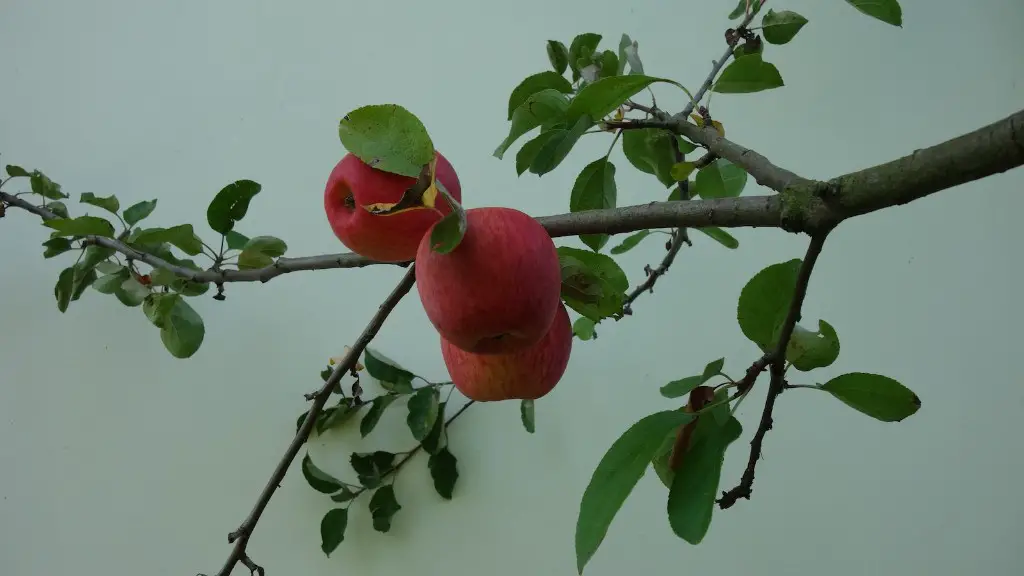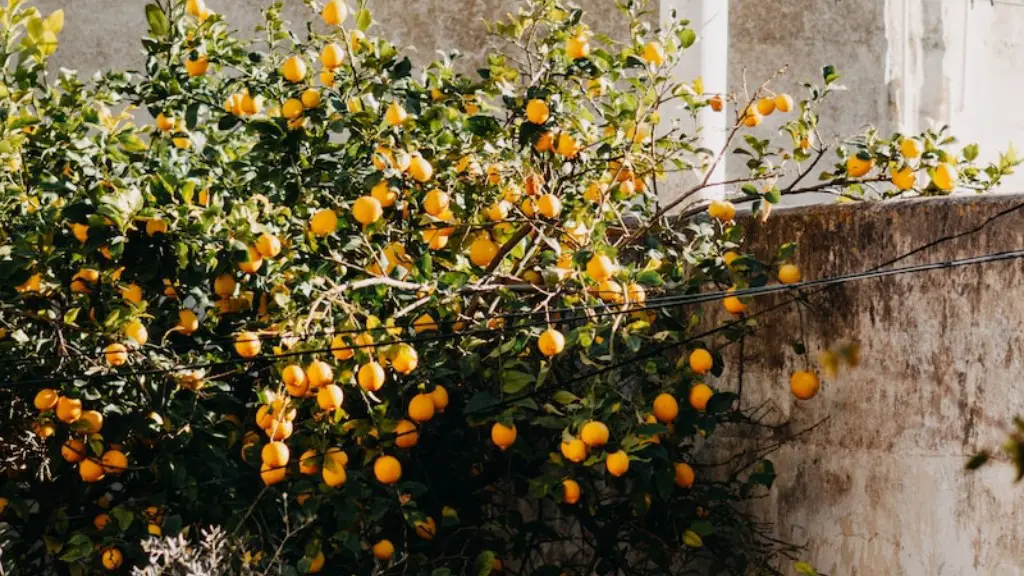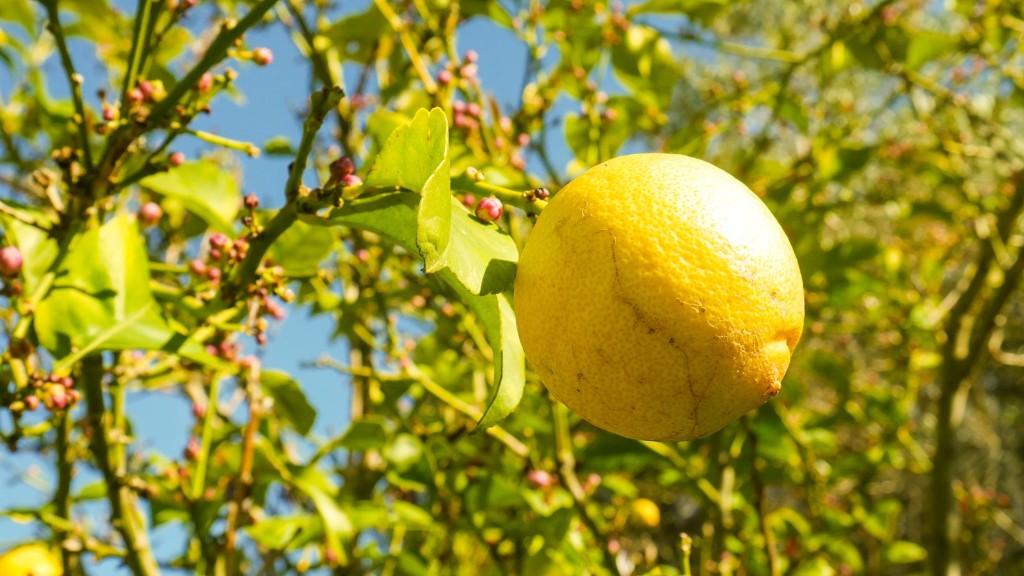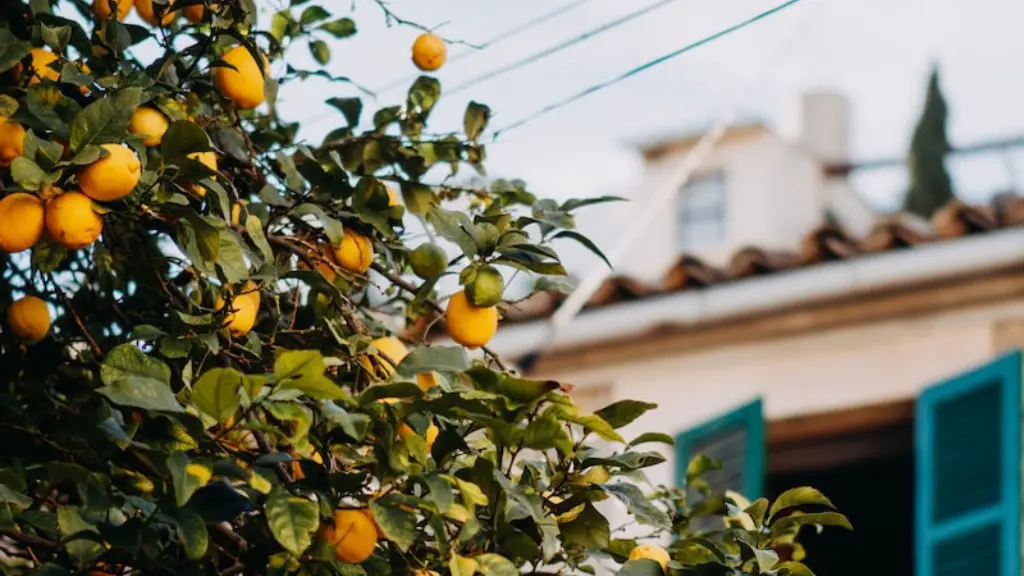Appropriately pruning a young apple tree is essential for the health and productivity of the tree. When conducted correctly, pruning will allow for an even and healthy growth of the tree. Pruning the young apple tree can seem a daunting task with all the branches, flowers, and leaves to consider. This article will provide a step-by-step guide on how to prune a young apple tree correctly.
The first step is to identify the primary and secondary branches of the tree. The primary branches should be vertical and growing up while secondary branches should spread out horizontally. Secondary branches are the last to develop, so you may need to wait until there are only a few main shoots on the tree before attempting any pruning.
Next, you should prune back any shoots that are growing at an angle or are crossing over each other. Crossing branches can be a hindrance to the tree’s growth as it limits its ability to access light and air. Removing any crossing branches will also ensure that the tree does not become overgrown or overcrowded.
Afterwards, prune away any dead, damaged, or diseased branches. These can be identified by their discolored or brittle appearance. Pruning these branches will prevent the spread of infection and encourage healthy growth in other branches.
Finally, you should aim to keep the central leader of the tree as strong and sturdy as possible. This is the main vertical shoot of the tree and should be the most vigorous. Prune off any shoots that could start to compete with the central leader and reduce its size or strength.
It is also important to prune in moderation. While pruning young apple trees can be beneficial, excessive pruning can affect how much fruit the tree will produce. Take care to only prune the amount of branches needed for a healthy tree and limb spread.
In conclusion, understanding how to prune a young apple tree correctly is essential for its longevity and productivity. With this guide, you can confidently prune your young apple tree and ensure it reaches its full growth potential.
Identifying the Parts of an Apple Tree
The anatomy of an apple tree is made up of a few important parts. Identifying these parts is essential when you are trying to prune a young apple tree correctly. The root system of the tree supplies nutrients and anchors the tree into the soil. The trunk and branches of the tree provide support and a platform for leaves and flowers to grow.
The primary branches of a young apple tree should be vertical, while secondary branches should be more horizontal in orientation. The central leader is the most dominant branch, which should be encouraged to grow in order to promote a strong, central structure to the tree. Finally, the fruit spurs of the tree develop where the leaf buds join the branches of the tree.
When undertaking the task of pruning, it is important to recognize these parts in order to make an informed decision. Understanding these parts of an apple tree will help in deciding which branches to prune and which to leave untouched.
The Benefits of Pruning
When pruned correctly, a young apple tree will develop more evenly and with more foliage. Pruning helps the tree to access more light and air, which helps with healthy growth. Pruning also helps to remove anything that is competing with the tree, such as weeds or overgrown branches. This will reduce the chances of overcrowding in the tree, which can stunt its growth.
In addition to this, pruning helps to promote higher fruit yields. When a tree’s branches are decreased in size and spread, the tree can focus more on developing fruits and flowers, as it does not have to use as much energy for growth and upkeep. Pruning can also reduce the risk of infection, as dead, diseased, or damaged branches can be easily removed without the need to treat the entire tree.
Finally, pruning keeps the tree in aesthetically pleasing shape. By encouraging even, vertical growth and reducing overcrowding, pruning helps to make the tree look more lively and pleasing to the eye.
The Pruning Process
The act of pruning a young apple tree can seem daunting, but it is important to remember that it is a gradual process. Start by identifying the primary and secondary branches of the tree and removing any that are growing at an angle or crossing over each other. Additionally, any dead, damaged, or diseased branches should be removed.
Once you have identified which branches are in need of pruning, begin to take away small amounts of the branch ends. This will help promote an even growth of the tree and will prevent too much branching. Pruning should be carried out in moderation and careful thought should be given to which branches to keep and which to remove.
When pruning an apple tree, make sure to use the correct tools. Pruning shears should be sterilized with alcohol before and after use to prevent the spread of infection. When pruning off larger amounts of branches, use a chainsaw or saw, and make sure to cover the blade in oil before using it.
Inspecting the Tree After Pruning
In order to ensure that pruning is conducted correctly, it is important to inspect the tree after pruning. Make sure that the tree has a balanced shape and limbs, and that the tree is healthy and vigorous. If any shoots have been pruned away too far, try to support them with wire to help them grow back.
Additionally, inspect the tree for any signs of infection. If any branches have been infected, they should be removed as soon as possible. If needed, treat the tree with fungicide or insecticide to prevent further infection.
Finally, if there is too much pruning of the tree, it will affect the amount of fruit produced. If the tree is heavily pruned and does not produce enough fruit, you may need to adjust your pruning regimen and take away less branch ends. This will help the tree to get back on track and produce healthy and abundant yields.
Long Term Care for an Apple Tree
Pruning is only one act of taking care of an apple tree. In order to ensure that the tree has a healthy lifespan, it is important to provide the tree with other forms of long term care. This includes fertilizing the soil with compost or manure, weeding around the tree and in its canopy, and mulching to keep the soil moist.
It is also important to monitor the tree closely for diseases or pests. Inspect the tree regularly and take action if any signs of infection are present. Additionally, make sure to spray the tree with pesticides or insecticides if needed to protect it from pests and other harmful organisms.
It is also a good idea to build a protective structure around the tree. This could include building a protective fence or wall around the tree, or installing canopies or netting over the tree. This will help to protect the tree from animals, wind, and storms and can help to extend the tree’s lifespan.
Finally, it is important to regularly water the tree. Watering the tree deeply and consistently will help to promote healthy growth. Make sure to avoid over-watering the tree, as this can cause the roots to rot, and can lead to further problems such as diseases.



